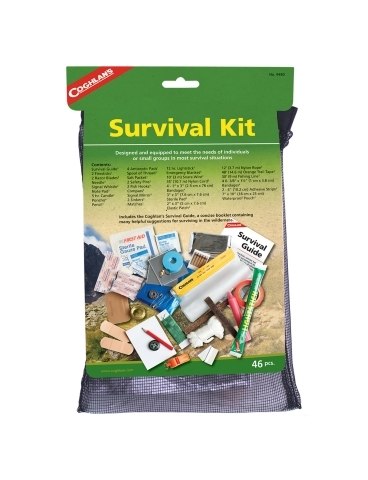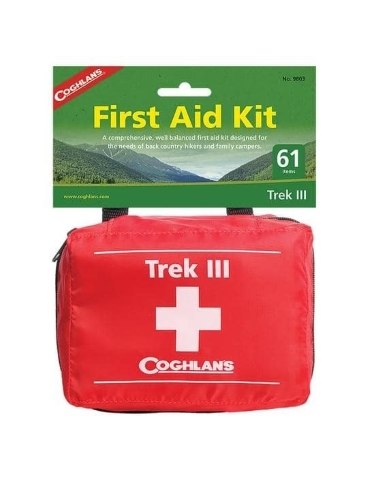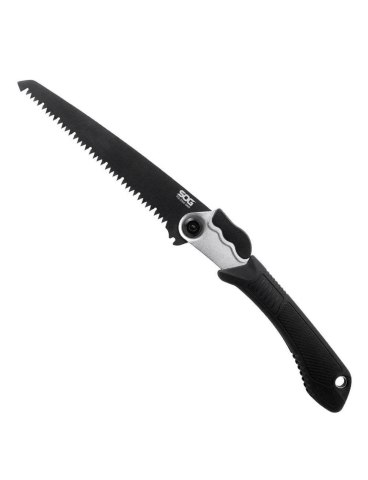Types of EDC Carry - Vehicle Carry
Preparedness is a popular and important topic these days and everyday carry is one of several factors that tie into the subject. You've read about Basic EDC and Backpack EDC, now it's time for Vehicle EDC.
Everyday carry is designed to help get you through normal to adverse situations and for the most part vehicle carry will focus on the adverse rather than normal situations.
This divides vehicle EDC into two major categories: Vehicle focused and Personnel focused.
Vehicle Focused EDC
The Vehicle focused EDC will more than likely stay in the vehicle all the time and will focus on keeping the vehicle running or repair it enough to get better equipped help. This is especially important if you view your vehicle as your mobile command base.
The basics of this category are a jack, tools for tire removal/repair, and fluids for the vehicle such as anti-freeze and engine oil. You may add brake fluid and windshield wiper fluid as well. This can be expanded to an air tank or small compressor for refilling tires, tools for engine work, and similar vehicle related items.
Expanding from the basics you may also consider adding additional equipment, such as a Coghlans Survival Kit, in order to have tools for conditions that are more focused on living around the vehicle. A lot of the time some of your vehicle's EDC will do double duty.
A blanket not only will allow for romantic nights under the stars but also allow you to keep warm if you break down in the winter. While a survival blanket will absolutely help in a situation like that, it works especially well when combined with another blanket.
A camp shovel or a folding snow shovel can also be added to the vehicle's EDC to provide you with a digging implement, although the camp shovel/E-tool can be added to the Personnel focused EDC.
Personnel Focused EDC
Moving into the Personnel focused EDC, we can break this down into two smaller categories: Medical supplies and Get Home Bags/Go Bags.
Medical is often overlooked in the newer preparedness planning, but it is more likely to be used than any other preparedness item. There should be enough medical supplies stored in the vehicle to care for all the regular passengers and at least two other people. A Coghlans Trek3 III First Aid Kit would be a good start for individual medical care, especially if at least one quality tourniquet is added to it.
From this baseline you can expand into larger trauma kits and bags or build your own. Pre-made trauma kits are generally easier to acquire than trying to build your own. Although a decent sized bag filled with several individual kits is a good start. You should also have a kit for severe trauma and one for minor injuries if you decide to go all out for medical. This will allow you to save time in looking through the larger trauma kit and just access what you need to treat minor cuts without disrupting the trauma kit. Keep these two different kits separated so they are not confused with each other.
Get Home Bag
Now we'll look at the Get Home Bag. There are a number of views on this item. It will function similarly to Backpack carry in that it will have more survival items stored in it such as fire making tools, cordage,and its own separate kit stored in it like Coghlan's Survival Kit In A Can.
You should also consider keeping larger tools than what your normal EDC would feature in you Get Home Bag. This can be something like the SOG Folding Wood Saw or a fixed blade (depending on your local laws). Tools for dealing with window glass and tools for extracting people from car crashes can also be considered for your overall Vehicle EDC and can range from dedicated tools like glass punches to higher end tomahawks.
Weapons and Accessories
Another consideration to have for your Vehicle EDC if you carry a firearm or feature a firearm in your vehicle are items for that firearm. Spare loaded magazines and cleaning kits can be featured in your bag and in sealed containers in your vehicle.
You should not store a firearm in your vehicle as it increases the likelihood that it will be stolen. Make sure that the firearm or firearms and ammunition can be easily brought inside in order to store them more securely. This obviously is dependent on the laws of your area and your budget since something like an AR pistol or an short barreled rifle with spare magazines could easily be factored into you Bug Out/Get Home Bag.
Longer options like a standard carbine length rifle require different solutions. This generally means specialized bags or the use of some sort of folding stock. If you have a rifle for home defense this makes it easier to support a rifle in your vehicle.
If you do not, other options are pistol caliber carbines. These add the option of using the ammunition that your sidearm already uses, saving on cost. This option allows for a lower start up cost and maintenance since they come in a variety of options that can sync with the support system that you already have for your pistol.
While adding a long gun to your vehicle EDC is an option and should be considered for any long term plans for a Bug Out Bag or Get Home Bag it is not a necessity or a priority. The main point of the vehicle EDC is to maintain your mobility.
Summary
The majority of your vehicle EDC should be geared toward keeping your vehicle and you running. This will take the form of basic car care, medical supplies, spare clothing, long term food (like MREs), and a basic survival/bushcrafting kit.
In your overall preparedness plan your vehicle EDC may be more important than your on-body EDC. This is especially true if you travel a lot in your vehicle to get to or from work. The likelihood of encountering a vehicle related problem is more realistic than many preparedness scenarios since there are millions of car accidents per year.
Recent Posts
-
Best Folding Knives for EDC
Aug 27th 2023 -
Best Olight EDC Everyday Carry Flashlights
Aug 25th 2023 -
Best Pocket Knives
Aug 24th 2023



